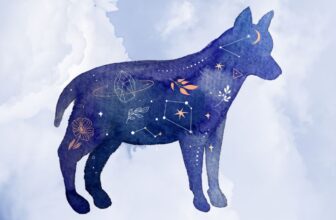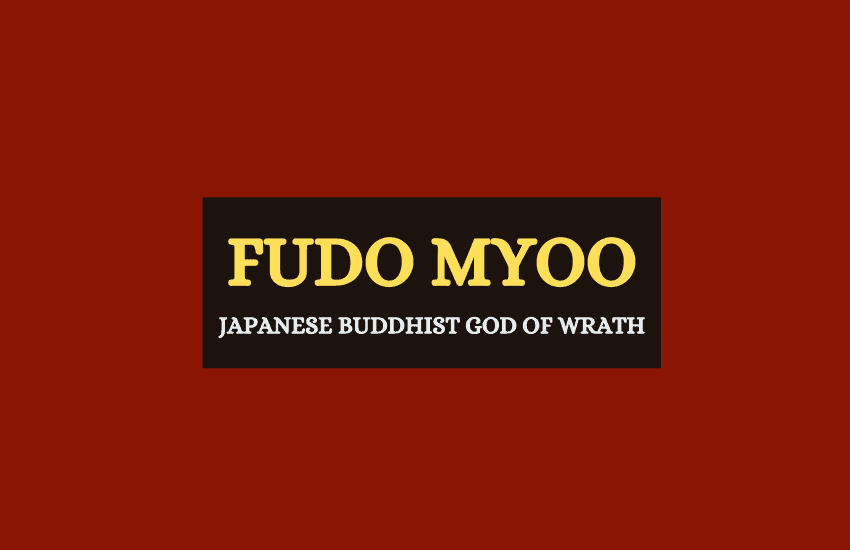
Table of Contents
Japanese mythology is a captivating mixture of several different religions and cultures, including Buddhism, Taoism, and Hinduism. Nevertheless, the most prominent and fundamental religion to most of the Japanese mythos is Shintoism, so it’s no surprise that most of the gods of war in Japan are Shinto kami (gods) with just one notable exception.
Hachiman
Hachiman is one of the most famous and actively worshipped kami in Japanese Shintoism and culture today. At face value, he appears like a relatively straight-forward kami of war and archery, as well as a tutelary deity of the Minamoto (Genji) samurai clan.
What makes Hachiman special, however, is that he’s also worshipped as the divine protector of Japan, its people, and the Japanese Imperial House. This is largely because Hachiman is identified as one of the oldest and most beloved Japanese Emperors – Ōjin. In fact, the very name Hachiman is translated as God of Eight Banners because of the myth that there were eight heavenly banners in the sky on the day Emperor Ōjin was born.
What also helps the Hachman myth be so popular to this day is that his entire appearance and character is shaped by both Shinto and Buddhist motifs.
Takemikazuchi
The god of conquest, storms, and swords Takemikazuchi has one of the most bizarre birth legends in all of the world mythologies – he was born from the droplets of blood which fell from the sword of his father, the Creator god Izanagi. This occurred just after Izanagi had killed one of his other newborn sons, the fire kami Kagu-tsuchi, for burning and killing his wife Izanami while she delivered him. And what’s probably even more amazing is that Takemikazuchi isn’t the only kami born in this absurd way – five other deities were also born together with him.
What makes Takemikazuchi a kami of conquest and swords, however, isn’t his birth – it’s the famous Japanese Subjugation of the Land myth cycle. Accordingly, Takemikazuchi is sent down from the Heavenly Realm of the kami to the Terrestrial realm of people and earthly kami to conquer and subdue the Earth. Naturally, Takemikazuchi executes this task perfectly, thanks to his trusty Totsuka-no-Tsurugi sword and the occasional help of some other lesser kami.
Bishamon
Bishamon is the only of the major Japanese war gods that doesn’t come from Shintoism. Instead, Bishamon comes from a range of other religions.
Originally a Hindu war deity by the name of Vessavaṇa, he became a Buddhist protector war god called Píshāmén or Bishamonten. From there, he became a Chinese Buddhism/Taoism war god and the strongest of the Four Heavenly Kings called Tamonten, before finally coming to Japan as a protector deity of Japanese Buddhism against the evil spirits of Shintoism. He was still called Bishamonten or Bishamon.
Bishamon is usually portrayed as a heavily-armored and bearded giant, carrying a spear in one hand and a Hindu/Buddhist pagoda in the other, where he stores the treasures and wealth he protects. He’s also usually shown stepping on one or more demons, symbolizing his status as a protector deity of Buddhist temples.
What’s also interesting about Bishamon is that he isn’t just one of Japan’s several war gods, he also later becomes one of Japan’s Seven Lucky Gods because of his association with both wealth (closely related to luck) and his protection of warriors in battle.
Futsunushi
The story of Futsunushi is similar to that of Takemikazuchi, even if Futsunushi is less popular today. Also known as Iwainushi or Katori Daimyōjin, Futsunushi was also first a localized deity, in his case of the Mononobe clan.
Once he was accepted into the wider Shinto mythos, he too was said to have been born from the blood dripping from Izanagi’s sword. The difference here is that some legends cite him as born directly from it and others – as a descendant of a couple of other kami born from the sword and the blood.
Either way, Futsunishi is worshipped as a god of both war and swords, as well as a god of martial arts. He was also a part of the Subjugation of the Land myth cycle as he eventually joined Takemikazuchi in the conquering of Japan.
Sarutahiko Ōkami
Sarutahiko may not be the most popular Shinto kami god today but he is one of the only seven Ōkami Great Kami gods in Shintoism together with Izanagi, Izanami, Amaterasu, Michikaeshi, Inari, and Sashikuni. He is also known as one of the earthly kami, i.e. kami who live on the Earth and walk among the people and the spirits.
As a god, Sarutahiko Ōkami is viewed as both a god of war and a god of Misogi – a practice of spiritual purification, a spiritual “washing of the body” of sorts. He’s also viewed as a provider of strength and guidance to the people of Japan and he’s also connected to the martial art Aikido. That last connection is not because of his status as a god of war but because Aikido is said to be a continuation of the Misogi spiritual practice of purification.
Takeminakata
Also known as Suwa Myōjin or Takeminakata-no-kami, this is a deity of many things including agriculture, hunting, water, wind, and yes – war. The initial connection between Takeminakata and war seems to be that he was viewed as a protector of Japanese religion and as such, he also had to be a warrior deity.
However, this didn’t make him a “part-time war god”. Takeminakata was worshipped by many samurai clans throughout the ages, oftentimes with a cultish feverishness. Takeminakata was also believed to be the ancestor kami of multiple Japanese clans but especially the Suwa clan which is why he’s now mostly worshipped in the Suwa Grand Shrine in the Shinano province.
Wrapping Up
The above list features the most prominent Japanese deities associated with wars, conquests and warriors. These gods remain important figures in their mythology, and are also often featured in pop culture, including in anime, comic books, movies and artwork.








